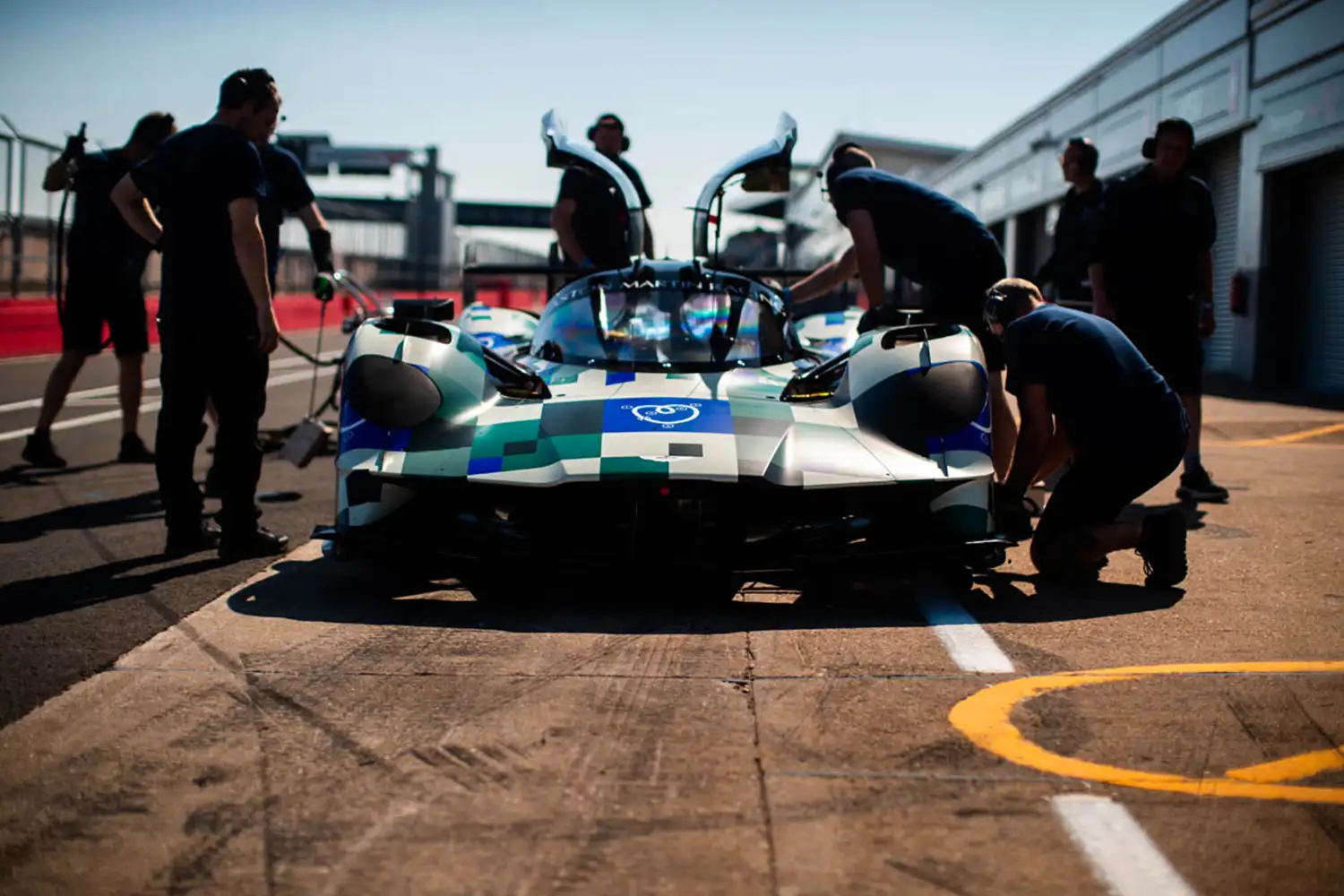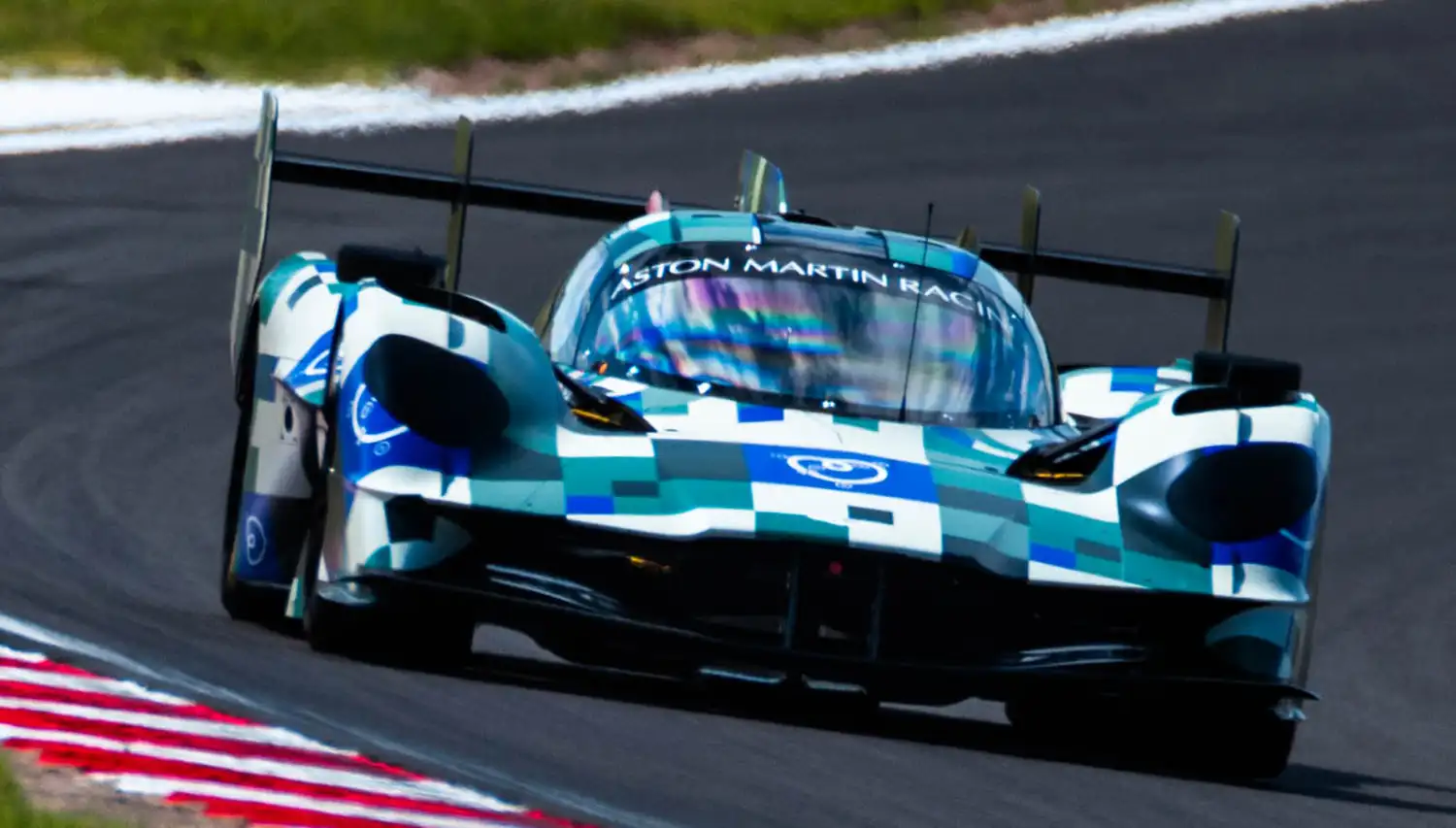
The new Aston Martin Valkyrie AMR-LMH has hit the track for the first time, marking the beginning of a comprehensive testing program ahead of Aston Martin’s ambitious bid to win the 24 Hours of Le Mans outright next year, a feat the brand hasn’t achieved since 1959.
Developed by Aston Martin Performance Technologies in collaboration with The Heart of Racing, the new Hypercar underwent shakedown and initial evaluation testing in the UK this week. The testing team included Aston Martin High Performance development driver Darren Turner (GBR), The Heart of Racing’s Mario Farnbacher (DEU), and Harry Tincknell (GBR), who previously won the LMGTE class at the 2020 24 Hours of Le Mans with Aston Martin.
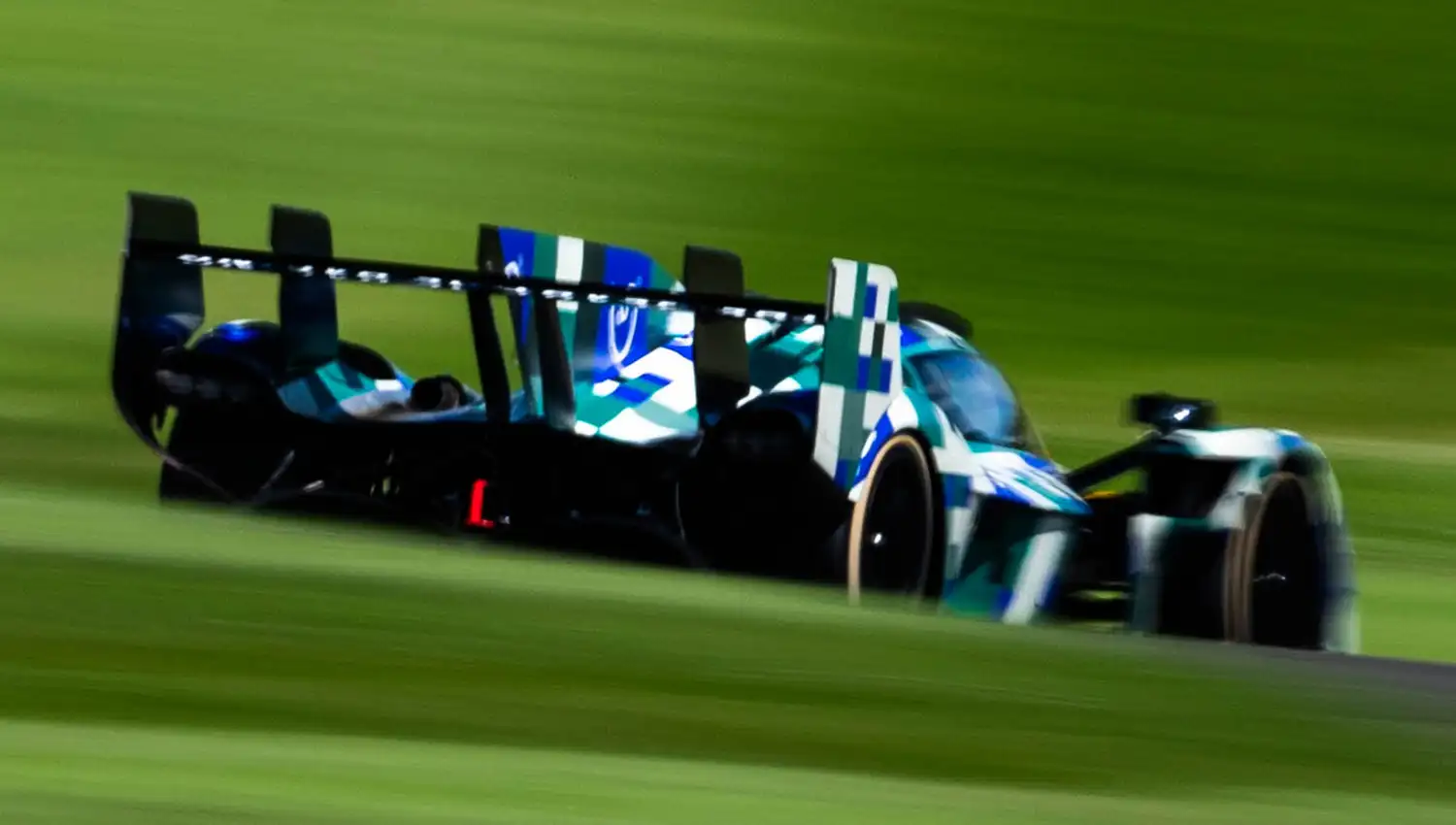
Aston Martin and The Heart of Racing will now embark on a full development schedule to prepare the Valkyrie AMR-LMH for FIA homologation in the autumn and its competitive debut in early 2025. This groundbreaking car is set to become the first Hypercar to compete simultaneously in the FIA World Endurance Championship (WEC) and the US-based IMSA WeatherTech SportsCar Championship (IMSA).
Unique in its class, the Aston Martin Valkyrie AMR-LMH is the only Hypercar that traces its roots back to a roadgoing counterpart – the Aston Martin Valkyrie, the ultimate hypercar. The Heart of Racing will field two Valkyrie AMR-LMH cars in WEC and one in IMSA in 2025.
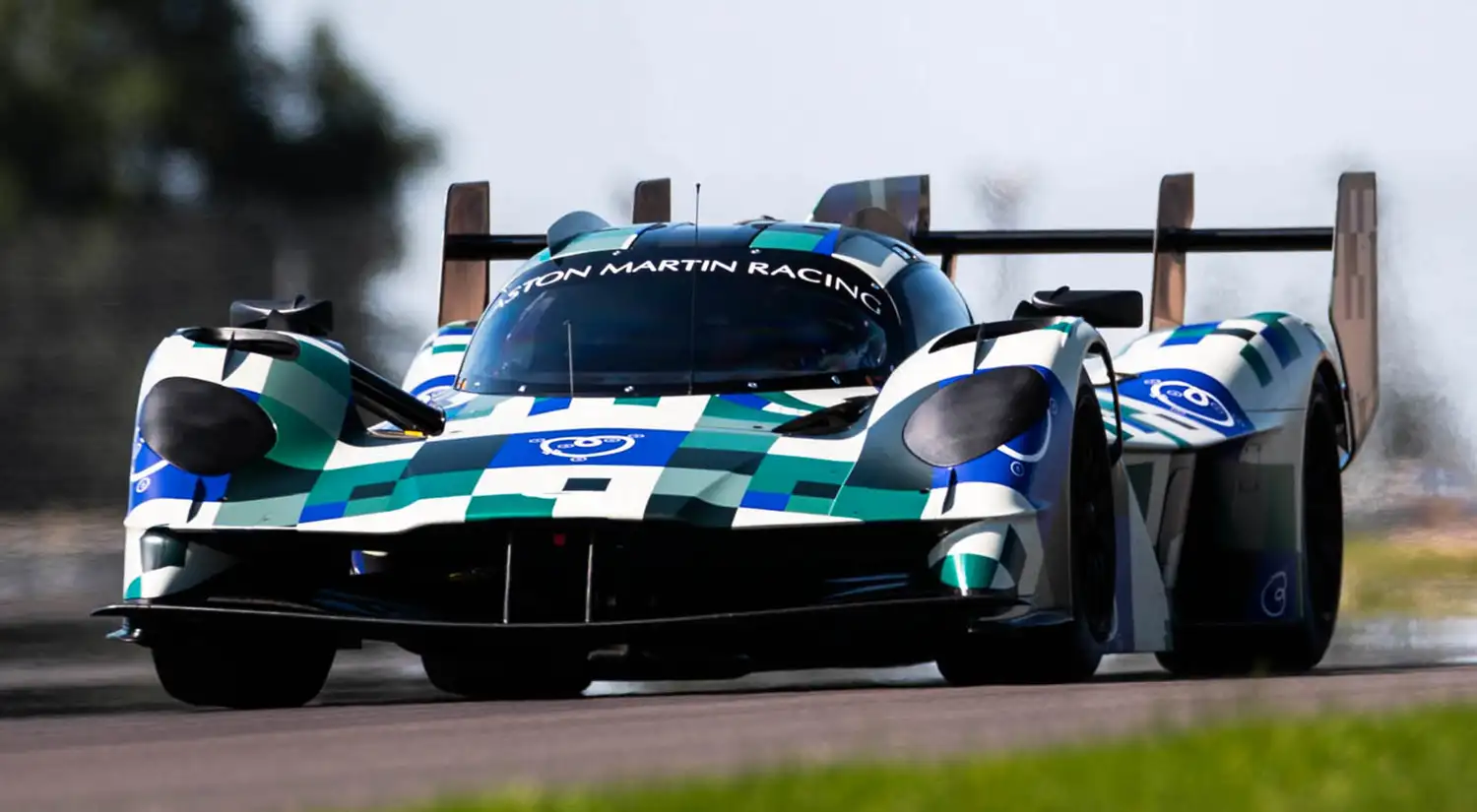
Adam Carter, Aston Martin’s Head of Endurance Motorsport, remarked, “The Valkyrie AMR-LMH sets its own standard as a thoroughbred endurance competition car. It is a pure, leading-edge racing machine, and while it is very early in the testing cycle, from what we have witnessed so far, we are satisfied that it is achieving the targets and criteria we have set out for it to accomplish.”
The Valkyrie AMR-LMH features a race-optimized carbon-fiber chassis and uses a modified, lean-burning version of the Cosworth-built 6.5-liter naturally aspirated V12 engine, capable of revving to 11,000 rpm and developing over 1000 bhp. This power unit has been enhanced and adapted to meet the performance requirements of the Hypercar class and to endure the rigors of top-level long-distance competition.
The Heart of Racing has recently established a UK headquarters for its WEC program near where the racing cars are being constructed in cooperation with Aston Martin Performance Technologies at Silverstone. The team is overseeing the development and testing program of the Valkyrie AMR-LMH, which will move from the UK to various European circuits throughout the summer as performance evaluation becomes the priority.
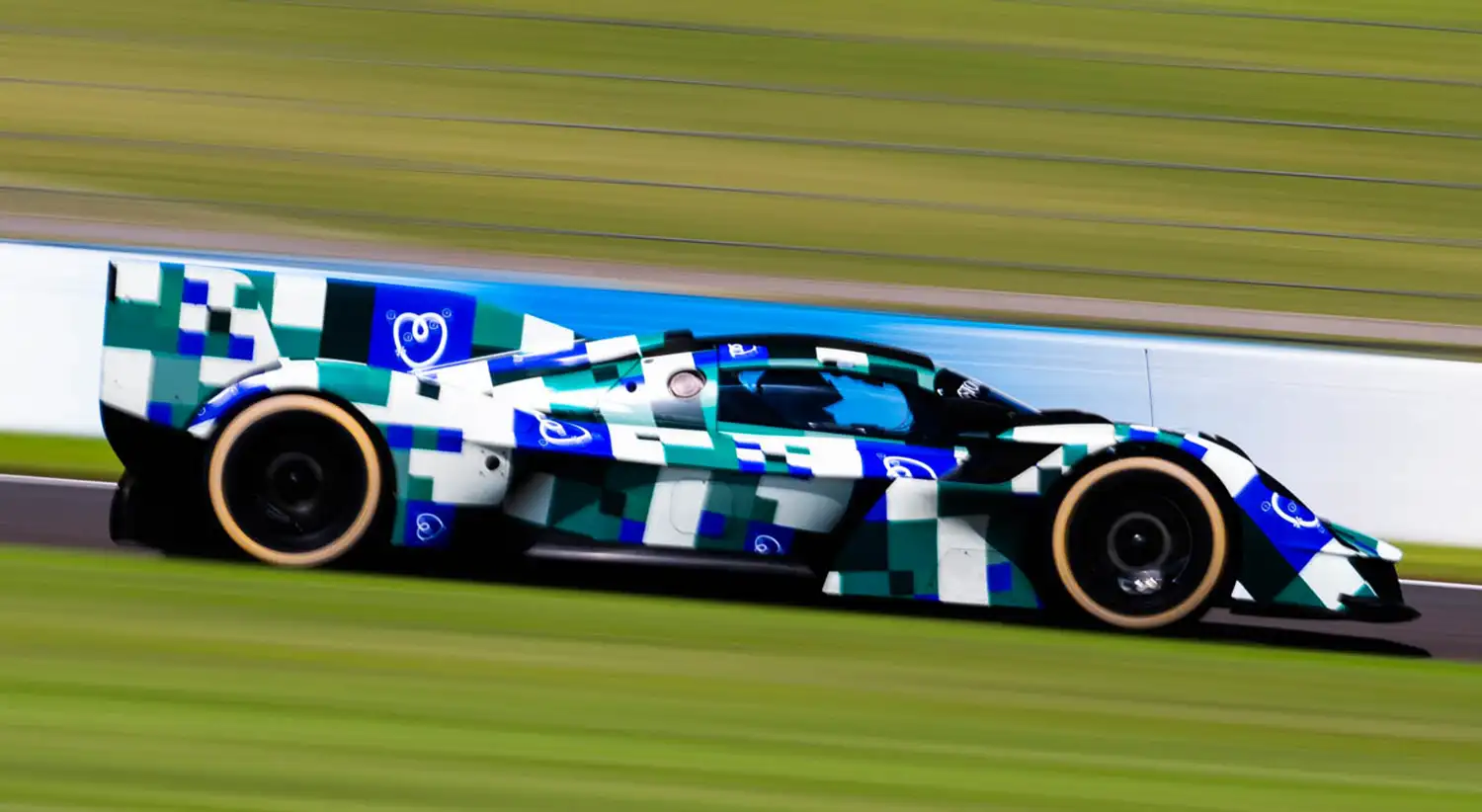
Ian James, Team Principal of The Heart of Racing, expressed his excitement: “The first runs for the Valkyrie AMR-LMH have been an immensely proud moment in the program. The birth of this project has been a couple of years in the making, so to get it to the track and to see it going around in the flesh feels momentous for The Heart of Racing. We’re looking forward to the journey ahead – it’s a steep hill to climb for everyone involved in this project. We are at the pinnacle of sportscar racing, the competitors are formidable, and they have been doing it a long time. Some of them have endless resources. We know we are going up against the best, so we intend to represent Aston Martin at the same level. I believe, from what we have seen so far, and with the DNA of where this car came from, I think we have the right tools to be able to do this successfully.”
Aston Martin, with The Heart of Racing, also plans an IMSA WeatherTech Sportscar program for the Valkyrie AMR-LMH, competing in the GTP class, run out of The Heart of Racing’s Phoenix headquarters in North America.
Aston Martin’s entry into the Hypercar class ensures the British ultra-luxury sportscar manufacturer will have a presence in all aspects of endurance racing, from gentleman racers to the pinnacle of the sport. From 2025, Aston Martin will be the only manufacturer competing at all levels of sportscar and GT racing (from Hypercar to GT4) as well as the FIA Formula 1® World Championship.
Over the past 95 years, more than 240 drivers have raced Aston Martins at Le Mans across 27 different chassis and engine combinations. No other venue has brought Aston Martin more success or more steadfastly proven that the brand’s DNA is forged from the essence of competition.
Source: Aston Martin
This Article use tools from Chatgpt
